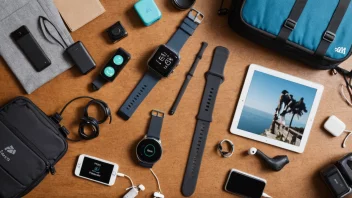In today’s fast-paced work environment, technology is evolving at an unprecedented rate. One area experiencing significant transformation is the use of wearable tech in the workplace. To explore this fascinating topic, we had the opportunity to 'interview' Dr. Daniel Turner, a fictional expert in workplace technology and ergonomics. Dr. Turner has spent over two decades researching the impact of technology on employee productivity and well-being. His insights shed light on how wearable devices are revolutionizing the way we work.
The Rise of Wearable Technology in the Workplace
Interviewer: Dr. Turner, can you explain how wearable technology has become more prevalent in the workplace?
Dr. Turner: Absolutely. Over the last few years, we’ve seen a surge in the adoption of wearables, from fitness trackers to smartwatches. Companies are increasingly recognizing the benefits these devices offer in monitoring employee health, managing time, and enhancing communication. They provide real-time data that can help employers create a healthier work environment, which ultimately leads to higher productivity.
Benefits of Wearables for Employee Health and Productivity
Interviewer: What specific benefits do you see in terms of employee health and productivity?
Dr. Turner: Wearables can track vital signs, activity levels, and sleep patterns, enabling employees to take charge of their health. For instance, a fitness tracker might remind someone to take a break and stretch after sitting for too long. This proactive approach to health can reduce burnout and improve focus. Moreover, some companies use wearables to monitor stress levels, which can lead to timely interventions and support.
Enhancing Communication and Collaboration
Interviewer: How do you see wearable technology enhancing communication among teams?
Dr. Turner: Wearables like smartwatches allow for quick notifications and messages without needing to pull out a phone or computer. This seamless communication can be especially beneficial in fast-paced environments like construction sites or factories, where hands-free communication is vital. Additionally, some wearables even offer features like video calls, enabling better collaboration regardless of location.
Challenges and Considerations
Interviewer: While wearables have many advantages, are there any potential downsides?
Dr. Turner: Yes, there are considerations to keep in mind. Privacy is a significant concern. Employees may feel uncomfortable with constant monitoring, which can lead to a sense of distrust. Companies must establish clear policies on how data is collected and used. Furthermore, there’s the risk of over-dependence on technology, which could detract from face-to-face interactions and personal connections in the workplace.
The Future of Wearables in Work
Interviewer: Looking ahead, how do you envision the future of wearables in the workplace?
Dr. Turner: I believe we’re just scratching the surface. As technology advances, wearables will become more integrated into workplace systems. For example, augmented reality glasses could provide employees with real-time data and instructions while they work, improving efficiency and reducing errors. The key will be to balance technology with the human element, ensuring that wearables enhance rather than replace personal interactions.
Conclusion
Dr. Turner’s insights illuminate the profound impact wearable technology is having on the workplace. From promoting health and productivity to enhancing communication, wearables are undoubtedly changing the way we work. However, as with any technology, it’s crucial to navigate the challenges thoughtfully to foster a positive and productive work environment. As we look to the future, the integration of wearables will continue to evolve, reshaping our professional landscapes in exciting ways.






